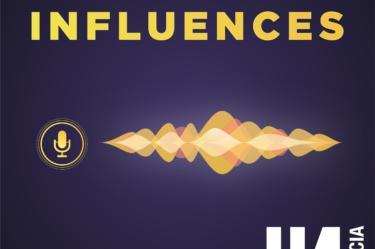1) Audio: a trending format
Audio is considered the trendy format of the moment. With the growing popularity of podcasts, audiobooks and audio streaming services, people are also spending more time listening to content than reading or watching it. This trend is fueled by the democratization of smartphones, smart speakers and wireless headphones, allowing people to listen to audio anywhere, whether at home, on the go or at the gym. As a result, audio platforms’ personalized algorithms are constantly recommending new content.
In short, audio is becoming a predominant format for content consumers, offering a convenient and engaging experience. Audio is such a powerful medium that it’s finding its way into many industries, attracting even the youngest listeners. In fact, according to a study by Médiamétrie, 82% of Internet users over 15 years old listened to at least one audio content a day in 2022.
2) To create immersive content
Audio plays an important role in creating immersive content by imparting a dimension that transports listeners. By using techniques such as spatialization, sound effects and music, content creators can add an extra layer of reality to their work and elicit emotion from listeners. In addition, the choice of character voices adds depth and humanity to content, while driving user engagement.
This makes audio an optimal solution for content creators to build immersive experiences for their users. According to a study by Air of Melty, 58% of Millennials believe that audio is the most immersive form of media.
3) To strengthen brand image
According to a study by ats studios, 70% of consumers believe that audio enhances brand image. Sound reinforces a company’s brand image by creating a distinctive and consistent sound identity. This can include choosing background music for an advertisement, creating a branded jingle or producing a corporate podcast. The voice and tone used in advertisements and presentations can also help create a strong and memorable audio identity for a brand.
4) To communicate more efficiently
Audio can make communication more effective by providing an alternative to visual communication media such as text and images. Natural voices or synthesized voices can convey emotions, tones and nuances of meaning more easily than simple text, which can improve understanding and memorization of key messages. Furthermore, audio presentations can be more engaging and impactful than text, especially for audiences with more developed auditory memories.
Audio can be used to create a richer learning experience, allowing users to hear concrete examples and detailed explanations. In short, by using audio strategically, companies can improve their ability to get their key ideas across, and optimize communication with their audience. It is estimated that over 30% of the population learns and remembers better by listening (source: Éducscol).
5) Several methods of audio content for your digital strategy
There are several ways to use audio to strengthen your digital strategy, including synthetic voice. Digital voices are used to create audio content in advertisements, automated messages or even to read press articles. Using synthetic voice in your content strategy can bring many benefits.
First of all, it helps to improve accessibility for people who have difficulty reading or understanding written content. As a result, synthetic voices can be used to create audio content, such as podcasts and videos, which can help attract a wider audience. Finally, synthetic voices can also be used to automate tasks and reduce production costs and save time. For example, an audio production using artificial voice takes only a few minutes to complete and at a much lower cost than a creation with human voices. Even Apple started creating audiobooks with digital voices earlier this year. In short, using synthetic voice can benefit a company’s digital strategy by improving accessibility, extending the reach of content and automating processes.
Synthetic voices or text-to-speech can also be used to provide features to apps or websites, offering a more natural and interactive experience to users. Podcasts can be long-form audio content on specific topics, providing an engaging and informative format for listeners. Ultimately, the production of quality audio content can be used to enhance customer engagement and retention, creating a dynamic and unique user experience for the target audience.
In conclusion, incorporating audio into your digital strategy can offer many advantages for your business. Whether it’s to reinforce your brand image or to communicate more effectively with your audience. By integrating digital voices into your digital strategy, you will be able to stand out from the competition and improve your engagement with your audience, while saving time and a large portion of audio production costs.
At ETX Studio, we’ve selected the best voices on the market and enhanced them with a pronunciation lexicon to help companies an create audio content from text in just a few clicks. Thanks to synthetic voices, we are reinventing the way media and brands such as Le Figaro, La Tribune or the French Senate produce content. Contact us to integrate audio into your editorial strategy to attract, retain and monetize new audiences.






